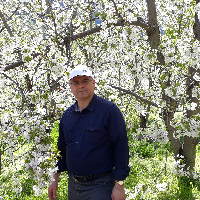Biochemical reactions of maize leave and roots to simultaneous salinity and drought stress
Irrigation management and use of partial root irrigation under saline conditions is one of the sustainable production strategies in agriculture. The production of reactive oxygen species and the cytoplasmic accumulation of smolites is one of the most common plant reactions to salinity stress and dehydration under these conditions. However, few studies have been performed on the variation of enzymes and cellular osmotic regulators in similar salinity and water stresses under the same osmotic and matric potential levels on the two sides of the root and its differences with separate stress conditions. The aim of this study was investigated the effect of partial irrigation management on activity of peroxidase and catalase enzymes, proline content variation under different levels of similar osmotic and matric potentials, in leaves and roots of maize in Fajr cultivar (KSC 260), in greenhouse conditions.
A factorial experiment with two factors; stress type (salinity, drought and mix stress) and potential levels in three values (-112, -191, and -363 KPa) was performed on the basis of completely randomized design with 3 replications. The culture media was subdivided into two equal sections by nylon for uniform and same distribution of the root in the mixed treatments. At mixed stress, half of the roots were subjected to salinity stress and the other half to drought stress (at corresponding levels equal to the osmotic and matrix potentials). Handmade tensiometers were used for drainage in salinity treatments. Catalase, peroxidase, total protein and proline were measured in both shoots and roots. Also, total dry weight and root of corn plant were calculated. The results showed that with decreasing the potential level, the activity of root peroxidase and catalase had a similar trend (increase) only in individual drought treatments and the drought part of the mixed treatment. In the drought part of the mixed treatment compared to the individual drought treatment, with decreasing the potential level, the activity of root peroxidase increased by 18.5% and the activity of root catalase decreased by 6.28%. At the potential level of -363 bar, the dry weight of roots in drought treatment, compared to salinity and mixed treatment increased by 48.3% and 31%, respectively. Despite different changes in the amount of traits measured in salinity, drought and mixed stresses, at the same potential, no significant difference in total dry weight was observed.
Maize plant under the same osmotic and matric potential levels exhibits different physiological and morphological behaviors. The use of partial root irrigation system with saline water in mix treatment will cause less stress than salinity treatment at low levels of osmotic potential to the plant. It seems, modification of plant biochemical reactions is one of the successes of root irrigation method with saline water. Therefore, due to the scarcity of freshwater resources, partial root irrigation with saline water is recommended as a nearly desirable system compared to other full root irrigation systems.
- حق عضویت دریافتی صرف حمایت از نشریات عضو و نگهداری، تکمیل و توسعه مگیران میشود.
- پرداخت حق اشتراک و دانلود مقالات اجازه بازنشر آن در سایر رسانههای چاپی و دیجیتال را به کاربر نمیدهد.


